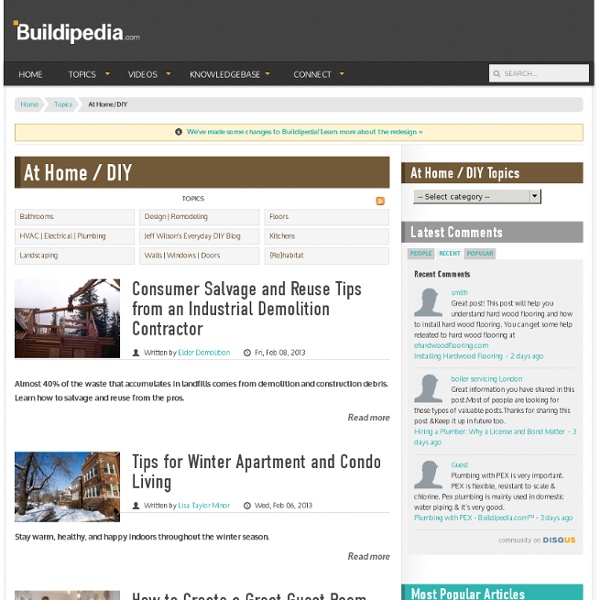Solar Site Survey
Search The Renewable Energy site for Do-It-Yourselfers Path of Sun Across the Sky Note: If you never liked "Science Time", you may want to skip the next few paragraphs, and go right to "Obstacle Survey". The path of the sun across the sky changes with the time of year. At the two equinoxes, the sun rises due east and sets due west. The winter solstice is the shortest day of the year and occurs on Dec 21 in the northern hemisphere. The summer solstice is the longest day of the year and occurs on June 21 in the northern hemisphere. The 23.5 degrees referred to above is the tilt of the earth axis of rotation relative to the plane of the earths orbit. In planning a solar collector location, it is important to make sure that the sun will shine on the collector during all the parts of the year that you want it to. Diagrams showing sunrise/sunset positions for the summer and winter solstices, and the suns altitude at the solstices and equinoxes. Obstacle Survey You will need the following
Housebuilders go back to basics by using traditional methods and materials | The Independent
Families unable to afford their own homes are turning their backs on the housing market and winding the clock back, building their own shelters using traditional methods and materials including mud, straw and wood. The trend for designing homes using natural local materials is a reaction to spiralling housing costs, according to the people who train “have-a-go” builders in historic construction techniques. The movement is even influencing major developers, who are investigating ways to use natural products to meet modern building standards. Charlotte Eve, the co-founder of Edwards and Eve Cob Building, says she and her partner have trained thousands of people to build modern, liveable homes using earth dug straight from the ground. In pictures: Traditional construction materials Ms Eve said interest in cob and natural building has grown since the economic downturn of 2008. Cob is a mixture of clay earth, sand and straw, and homes using this material can be built freestyle by hand. Cob Hemp
Traditional building materials and design | ClimateTechWiki
Earth-related building materials. In many non-urbanised areas in India, East Africa and South America, raw earth is abundant resource, which has popularly been used as building material. Over times, modern technologies have renovated the use of raw earth materials to improve their performance. For example, raw earth materials are converted into compressed earth blocks, made of a semi-dry mix of clay and sand and produced using a mechanised hydraulically compressed block machine. These blocks are reported to have a load-bearing strength two-thirds that of concrete masonry blocks (Mehta and Bridwell, 2004). A further improvement is achieved by mixing earth with a small percentage of cement during the production process to create compressed stabilised earth blocks. Stabilised rammed earth foundation is an innovative application of earth-related building materials. Innovative implementations of this principle include the installation of water sprayers on the roof, or roofpond systems.
About: What We Do – Open Building Institute
PHOTOSBarn Raising photo by Alexander W. Galbraith. Group Photo of Aquaponic Greenhouse Workshop by Joshua Langevin. Aerial photos of Aquaponic Greenhouse Workshop by Reid da Silva. 3D MODELS Most furniture, decor and plants used in 3D models by the SWEET HOME 3D community. ICONS Open Source Hardware logo by Macklin Chaffee.
» Trähus – Regelkonstruktioner
Text: Cathrine Bülow. Bild. Ekologiskt träregelhus med linisolering. Träregelhuset är idag det typiska svenska småhuset, byggt antingen i lösvirke på plats eller, vilket är vanligast, levererat från fabrik. Träregelväggen består av olika materialskikt som fyller olika funktioner. I konventionella träregelhus fylls facken med mineralull och väggarna tätas med plast. Historik Ursprungligen var våra trähus massiva konstruktioner av hela timmerstockar. Moderna ”trähus” – inga rena naturprodukter I vardagligt tal kallas lättregelhusen trähus, fastän det egentligen ofta bara är fasaden och reglarna som är av trä. Facken fylls sedan med isolering. Bild: Steffen Voss Flicr. Moderna, konventionella ”trähus” består alltså inte av speciellt mycket trä och är definitivt inga ”rena naturprodukter”, utan innehåller en rad miljö- och hälsoproblematiska produkter som limhaltiga byggskivor, mineralull eller ännu värre cellplast. Det går att bygga bra regelkonstruktioner!



